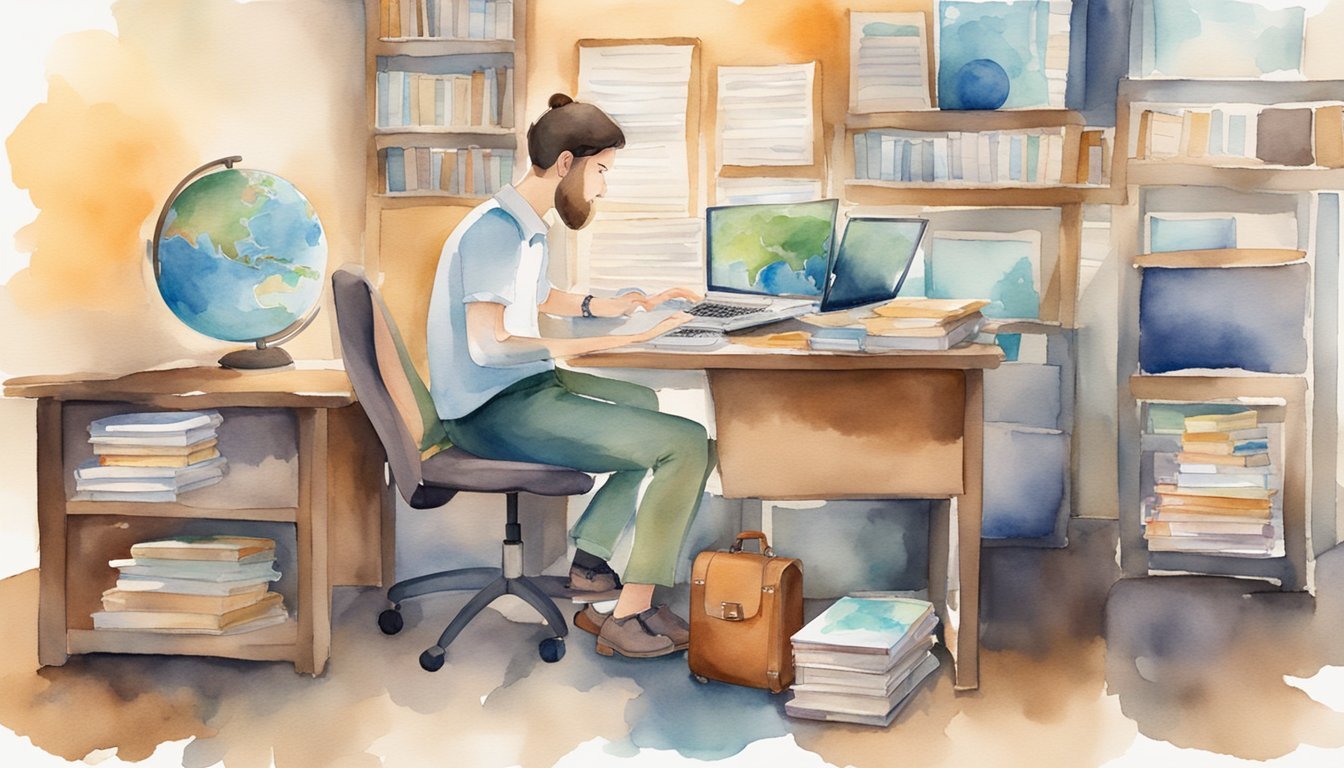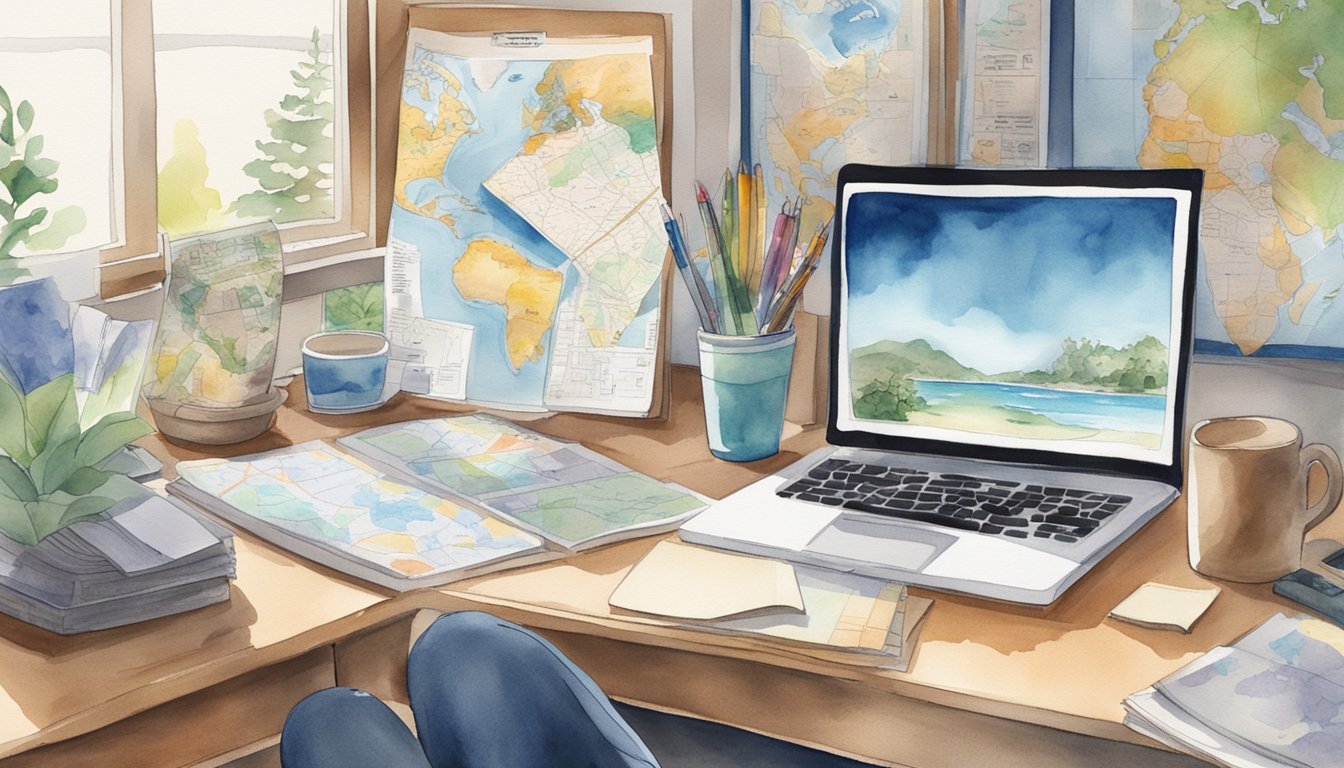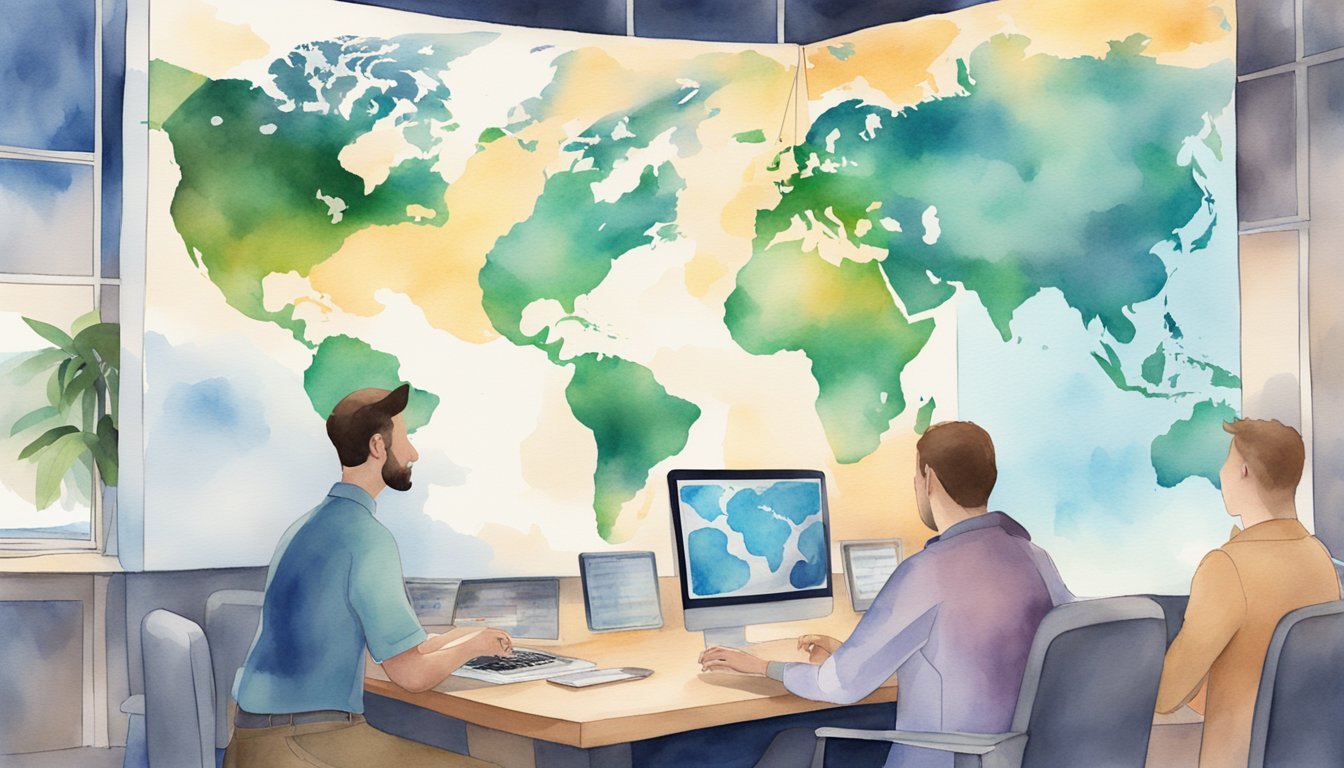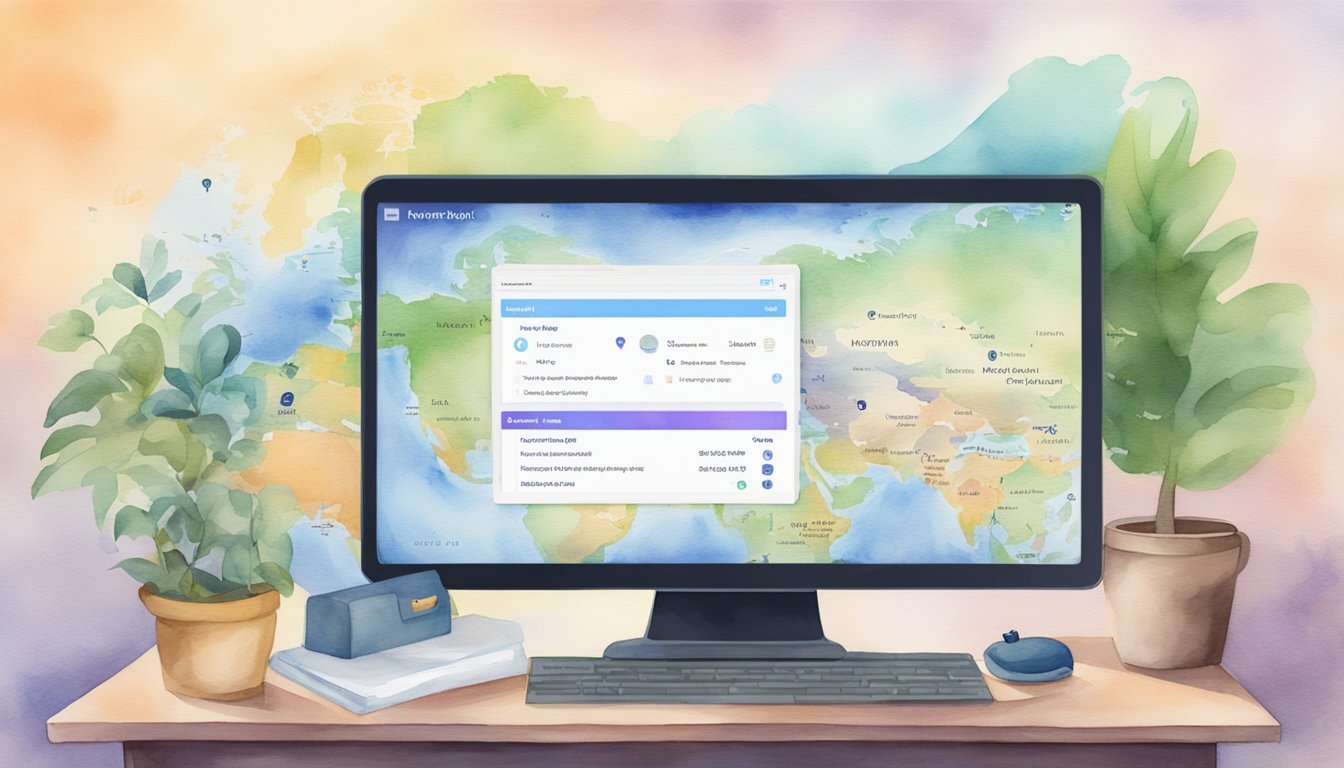Virtual Travel Planning: Turn Your Passion into a Lucrative Side Hustle

Ever thought about turning your love for travel into a side hustle? Virtual travel planning could be your ticket to combining passion with profit.
As a virtual travel planner, you can help clients design their dream vacations, from crafting detailed itineraries to booking accommodations and activities. Imagine getting paid to plan amazing trips and adventures for others.

Virtual travel planning offers freedom and flexibility.
You can work from anywhere, at any time, and connect with clients globally.
Whether you’re a seasoned traveler or someone who loves organizing trips, this side hustle allows you to share your expertise and make travel easy for others.
Plus, there are plenty of tools and apps to make your job even smoother.
Jumping into virtual travel planning is easier than you might think.
There are many resources to help you get started, from travel planning websites like Wanderlog to comprehensive trip planning tools like Planapple.
With these tools, you can create perfect itineraries, optimize routes, and even manage travel budgets for your clients.
Key Takeaways
- Virtual travel planning can be a profitable side hustle.
- Flexible work from home using travel planning tools.
- Easily create and manage detailed itineraries.
Understanding Virtual Travel Planning
Virtual travel planning involves using digital tools and services to organize your travel itinerary.
With advancements in AI, this method can significantly streamline your planning process, making it easier and more efficient.
The Role of AI in Streamlining Itineraries
AI-powered travel planners can quickly analyze your travel preferences and make personalized recommendations.
They can consider factors like your budget, preferred destinations, and even your favorite activities.
One of the major benefits of using AI in travel planning is its ability to analyze large amounts of data.
This means it can provide you with the best flight options, hotel deals, and local attractions.
For instance, an AI-based virtual assistant can help you avoid common travel pitfalls.
Moreover, these tools can adjust your itinerary in real-time.
If your plans change, the AI can quickly find alternative options without you needing to spend hours re-planning.
This makes travel planning less stressful and more enjoyable for you.
By integrating these AI technologies, virtual travel assistants offer a more personalized and efficient travel planning experience.
This can be a great side hustle for anyone looking to offer valuable travel planning services.
Getting Started with Your Travel Plan

Starting a travel plan can be both exciting and daunting.
By setting personal preferences and using helpful apps, you can create an organized and enjoyable experience.
Setting Preferences for a Tailored Experience
Begin by thinking about what matters most to you on your trip.
Do you prefer beaches, mountains, or city adventures? Are you looking for luxury or budget-friendly options? Knowing your preferences will help tailor your travel plan.
Create a list of must-see places and activities you want to experience.
This can include landmarks, restaurants, or unique local spots.
Consider your travel companions’ preferences as well to balance everyone’s interests.
Lastly, set a budget to guide your choices.
Knowing how much you’re willing to spend on accommodations, food, and activities will help keep you organized and stress-free.
Leveraging Apps for Efficient Trip Planning
Using travel apps can make planning easier and more efficient.
Apps like Wanderlog allow you to share itineraries with friends and optimize routes.
This app helps keep everyone in the loop and assists with real-time collaboration.
For a clutter-free planning experience, try Plan That Trip.
This app combines your itinerary, budget, and important documents in one place.
Keeping everything organized can save you time and reduce stress.
Another useful option is Pilot.
Pilot is great for social trip planning, letting you collaborate with your travel crew by sharing documents, notes, and lists.
Having everything in one app helps ensure a smooth travel experience.
By setting clear preferences and leveraging these helpful apps, your travel planning process will be much more enjoyable and efficient.
Designing Your Ideal Itinerary
Designing your ideal travel itinerary means selecting the best adventures and cultural experiences that suit your interests and schedule.
It allows you to make the most of your time and enjoy each moment of your trip.
Adventure and Activity Planning
When planning for adventure, think about what gets your adrenaline pumping.
Are you a fan of hiking, kayaking, or perhaps a thrilling zipline?
Create a list of activities catered to your interests.
Research the best places to visit for each activity.
For example, national parks are great for hiking, while coastal areas are perfect for water sports.
Remember to consider:
- Weather conditions
- Required gear
- Safety measures
Using apps like TripHobo can streamline this process, letting you create a detailed adventure schedule within your itinerary.
Creating a Cultural Experience Roadmap
Cultural experiences make travel unique.
Plan routes that take you through museums, historical landmarks, and local festivals.
Begin by researching the cultural highlights of your destination.
Use tools like Planapple to gather information about key cultural spots.
Include activities such as:
- Visiting local art galleries
- Attending traditional performances
- Exploring historical sites
Balance well-known landmarks with off-the-beaten-path spots for an authentic experience.
These elements add depth to your itinerary, making each day a blend of leisure and learning.
By carefully selecting cultural activities, you enrich your trip and gain insight into the local lifestyle.
Travel Planning Essentials
Travel planning involves making key choices about transportation and accommodations.
Knowing the best tools and methods can save you time and money.
Organizing Transportation
Whether you’re planning a road trip or booking flights, having a solid plan for transportation is crucial.
For flights, apps like Skyscanner provide price alerts and help you track fare changes, making it easier to find affordable options.
They also integrate frequent flyer miles, which can be handy if you travel often.
If you need road transport, tools like Google Maps can help you navigate and plan routes effectively.
It’s not just a map; you can also see traffic conditions, find nearby services, and estimate travel times.
For long drives, apps like Wanderlog enable you to create travel itineraries and share them with others, ensuring everyone is on the same page.
Booking Accommodations
When it comes to booking hotels, it’s important to compare prices across multiple platforms.
Websites and apps like TripIt can help you manage and store all your booking details in one place.
This app offers both free and paid versions, where the paid version provides additional features like real-time flight alerts and rewards tracking.
For more specific needs like guesthouses or rentals, platforms such as Airbnb offer diverse options.
Always read reviews and ratings to ensure the quality and safety of the places you choose.
For travelers needing budget options, hostels and shared accommodations are typically cheaper and can provide a more social experience.
Using these tools and tips will help you manage your travel essentials more efficiently, making your trip smoother and more enjoyable.
Budgeting for Your Trip

Planning your travel budget can make a huge difference in how smoothly your trip goes.
Smart budgeting ensures you have enough funds for transport, accommodation, and activities while also helping you save money.
Finding Cost-Effective Options
Finding cost-effective options is key to sticking to your budget.
Start with your flights and accommodation.
Use price comparison websites to find the best deals.
Sign up for alerts to get notified of discounts and flash sales.
For transport within your destination, look for public transportation options.
They are usually cheaper than cabs or car rentals.
If you are planning a road trip, there are apps that help you find the cheapest gas stations along your route.
Consider eating at local spots instead of expensive tourist restaurants.
Street food and small cafes often offer authentic experiences at a fraction of the cost.
Also, check out free activities like hiking trails or free museum days.
Allocating Funds for Different Trip Aspects
Divide your trip expenses into categories: transportation, accommodation, food, activities, and others.
Allocate a specific amount to each category based on your total budget.
For transportation, include flights, local transport, and any rental costs.
Accommodation costs can vary, so research and book early to lock in lower rates.
For food, plan for a mix of eating out and preparing your own meals if possible.
Activities can be a major part of your budget.
Prioritize what’s most important to you and look for discounts or package deals.
Consider setting aside an emergency fund for unforeseen expenses.
Using a travel budget calculator can help you keep track of your expenses and stay within your budget.
Tech and Tools for the Modern Traveler
Technology has revolutionized the way you plan your trips.
You now have various apps and platforms that make travel planning easier and more efficient.
Apps and Platforms for Travel Planning
Apps like Google Travel provide a comprehensive experience for organizing your itinerary.
You can book hotels, find flights, and even get recommendations on places to visit.
Google Maps helps with navigation and finding points of interest.
Platforms like Airbnb offer unique lodging options and experiences that can enhance your trips.
Using Airbnb, you can find anything from cozy apartments to luxurious homes.
It’s great for both short and long-term stays.
Another useful app is TripIt.
It keeps all your travel details in one place.
You can just forward your booking emails to TripIt, and it will create a master itinerary for you.
Don’t forget about Skyscanner for finding the best flight deals.
You can compare prices across multiple airlines and set up alerts for price drops.
For road trips, apps like Roadtrippers can help you map out your route and find interesting stops along the way.
You can discover scenic byways, local diners, and off-the-beaten-path attractions.
Using these tools makes travel planning not only easier but also more enjoyable and efficient.
Finding Must-Visit Destinations
Looking for must-visit destinations can be a fun yet challenging task.
You want to find places that are not only popular but also align with your personal interests and needs.
Researching Top Travel Spots
When researching top travel spots, start by exploring virtual tours.
This gives you a chance to experience the vibe of a place without leaving your home.
Sites like TripSavvy offer virtual tours of famous landmarks like the Statue of Liberty.
You can also use travel blogs and guides to discover hidden gems.
For instance, Lonely Planet features virtual tours of Yosemite and Mount Rushmore, giving you a peek into their natural beauty.
Similarly, the Fodors Travel Guide lists fascinating places like Dogo Onsen in Japan.
Online forums and social media can also provide insights into lesser-known spots that are worth visiting.
Joining travel groups on platforms like Facebook or Reddit can open up a wealth of recommendations and personal experiences, tailored to your interests.
Rozzle up a side hustle by sharing your travel finds and helping others plan their trips!
Dining and Cuisine Exploration

In the world of virtual travel, exploring food and dining can be both exciting and informative.
You can discover the best local restaurants and delve into their unique cuisines, all from the comfort of your home.
Discovering Local Restaurants
When traveling virtually, finding the right places to eat is crucial.
Many platforms let you explore local restaurants and their menus.
Websites like Moments Log offer tours of international street food.
You can see reviews, photos, and even virtual tours of dining spots.
This can help you decide where to “dine” virtually.
Interactive dining experiences are also popular. Tanic Design speaks about immersive dining, combining elements like themed decor and interactive performances.
These elements make your virtual dinner feel authentic and engaging.
Trying out online cooking classes can enhance your experience too.
Platforms highlighted by Hidden Lemur offer you the chance to cook alongside chefs, learning about the local cuisine directly from experts.
These activities not only allow you to taste the food but understand the culture behind it.
Group Journeys Made Simple

Planning trips with others can be fun but also challenging.
With the right tools and tips, you can ease the process of group travel planning and make sure everyone has a great time.
Coordinating with Tripmates
When organizing a group trip, communication is key.
Apps like MiTravel and Wanderlog let you plan together in real time.
Using a shared platform helps you decide on dates, pick accommodations, and choose activities without lengthy email threads.
Polls and votes make gathering everyone’s opinions easy, ensuring each group member feels included when final decisions are made.
For itinerary management, Prava offers in-app messaging and to-do lists.
This ensures everyone knows the plan and can stay organized, reducing stress and confusion during your trip.
Whether coordinating with friends or planning a family vacation, these tools make collaboration smooth and efficient.
Digital Nomad Lifestyle
Living as a digital nomad offers freedom and adventure as you work remotely while exploring different parts of the world.
It’s essential to plan your long-term travels to make the most of your experience.
Planning Long-Term Travels
When planning long-term travels as a digital nomad, a good strategy is to research and map out your destinations.
Look into factors like cost of living, internet connectivity, and local amenities.
Popular choices include cities like Chiang Mai, Lisbon, and Bali because of their lower costs and strong digital nomad communities.
Secure your remote work opportunities before embarking on your journey.
Having a steady job or consistent clients can reduce stress and provide financial stability.
Platforms like Upwork and Fiverr are great places to find freelance or remote gigs.
Pack wisely with versatile clothing and gear that supports your mobile lifestyle.
Important items include a reliable laptop, portable Wi-Fi, and adaptable power adapters.
Also, ensure you have the necessary visas and permits to work in your chosen destinations.
Frequently Asked Questions

Planning virtual travel has become increasingly popular, and there are plenty of tools and apps available to help.
From top-notch travel planner apps to AI-powered assistants, here’s what you need to know.
What’s the slickest travel planner app for globetrotters?
For globetrotters, the best travel app often combines ease of use with powerful features.
Apps like TripIt and Roadtrippers are highly recommended for their intuitive interfaces and ability to organize trips seamlessly.
Can you recommend any free tools for planning my next virtual getaway?
If you’re planning a virtual getaway, free tools like Google Travel and Skyscanner offer great options.
These platforms allow you to compare prices, find the best routes, and manage your itinerary without spending a dime.
What features should I look for in a travel planning virtual assistant?
When choosing a travel planning virtual assistant, look for features like 24/7 availability, personalized recommendations, and experience with booking and itinerary management.
Assistants that offer real-time updates and easily customize plans to your preferences are particularly valuable.
How do I land a gig as a virtual travel assistant?
To become a virtual travel assistant, you should have strong organizational skills and a good understanding of popular travel destinations and booking platforms.
Check out freelance platforms like Upwork or specialized job boards to find opportunities and build your client base.
Which site is your go-to for nailing travel plans online?
For nailing online travel plans, sites like Gateway Travel and Expedia are top choices.
They offer comprehensive services that make booking flights, hotels, and even virtual travel events straightforward and efficient.
Are there any AI-powered travel buddies that can map out my whole trip?
Yes, AI-powered travel assistants like Mezi and Hopper are excellent for mapping out your entire trip.
These apps use AI to provide personalized recommendations, track price changes, and even handle bookings for you, making your travel planning process effortless.






